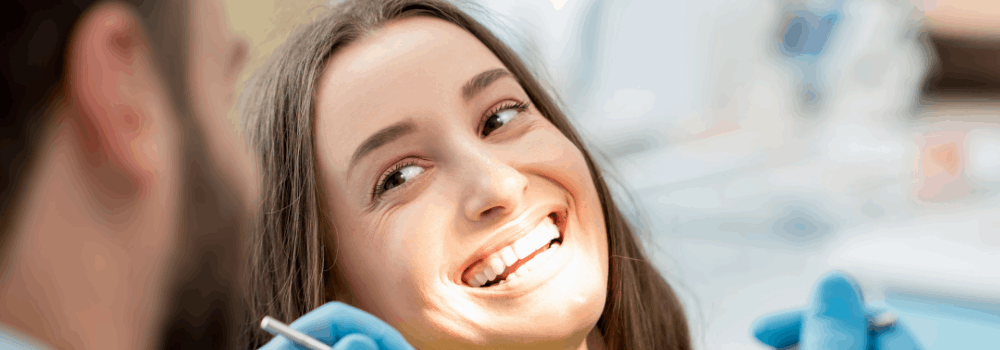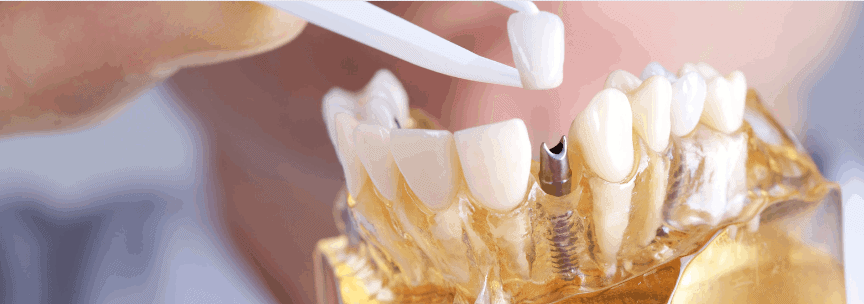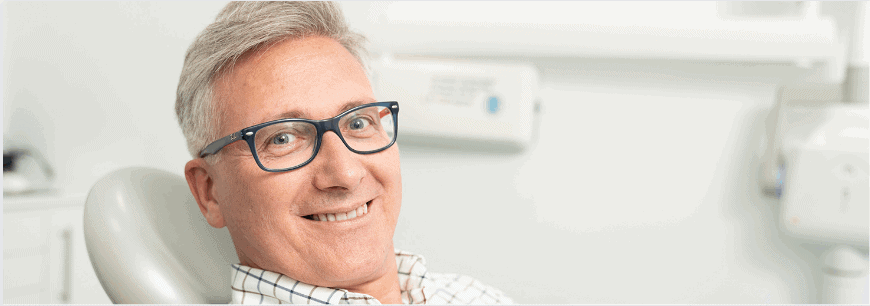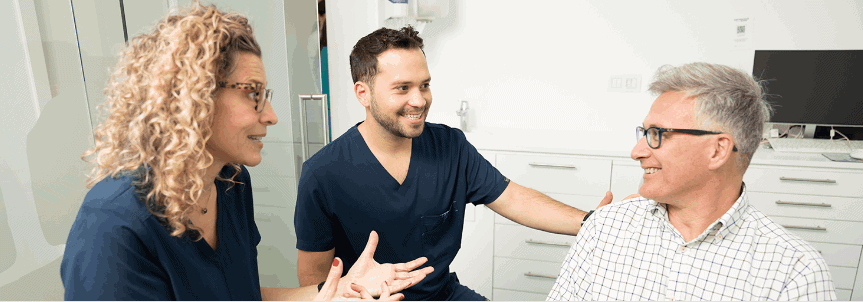Intravenous Sedation: The solution to your dental anxiety
Going to the dentist has become a source of anxiety for many patients, strong enough for most of them to give up on their dental care. However, it is not an option to give up on your oral health as you can develop general health issue and important dental suffering.
At the EL CEDRO Barcelona dental clinic, we help our anxious patients fight their fear of dentist thanks to the Intravenous Sedation.
What is intravenous Sedation?
The Intravenous Sedation is a modern medical technique that helps control the level of fear and anxiety of patients so that they can continue to seek treatment!

This is a combination of medication to help you relax (a sedative) and block pain (an anaesthetic) used during a medical or dental procedure. Overall, the sedative helps calm the patient’s nervous system.
The patient is placed in a state of complete deep relaxation, semi-consciousness, and loses track of time during the procedure. It’s making his mind calm which ease the process of receiving a dental treatment. However, the patient remains conscious enough to be able to understand and respond to the dentist when needed. This solution is really efficient to make time fly and de-stress.
What are the advantages of intravenous sedation?
⭐ Comfort
The IV reduces any type of anxiety and stress that patients may have, by relaxing them and putting them in a semi-counciousness state that is comfortable and restful. Additionally, it slightly alters the perception of reality. The sedatives allow a short-lived loss of memory, which results in a much reduced appreciation of the temporality of reality.
⭐ Time saving
The action of the sedative takes effect in just 10 minutes. This allows the whole treatment to be carried out in just one operation. It saves both patients and the medical team a lot of time.
⭐ Increased safety
This procedure is performed by an anesthetist who stays during the whole operation. He has a full range of modern equipment at his disposal, enabling him to monitor the patient’s vital, cardiac, respiratory and cerebral functions and to control the individual dosage of the medication injected.
How does intravenous sedation work?

Before the surgery the dentist, ask their patients to not eat during the 6 hours prior. Patients can consume beverages such as water, tea, fruit juice without pulp until 2 hours before surgery. However, milk and coffee should not be consumed during the 6 hours prior to surgery.
For a more comfortable experience, patients are advised to wear comfortable loose-fitting clothes. Regarding patients wearing lenses, they must remove them before the surgery.
Patients can take their usual medication before the surgery except for medication for diabetes.
Good to know: It is very important for patients to precise what type of medication they take.
The procedure:
➡️ At the patient’s arrival at the clinic, the medical team will check his health in order to know if he suffer from any type of allergies and make sure he followed the recommendations prior the surgery.
➡️ Sensors will then be placed on the patient’s chest to measure his heart rate, heart rhythm, finger oxygen saturation, breathing, temperature and blood pressure monitor. This allows the anhestestist to check the blood pressure every 5-10 minutes.
➡️ The anesthetist will then fit special nasal cannula with pure oxygen. These allow the anesthesia to accurately measure the patient’s ventilation rate and maintain an adequate level of oxygen in the blood. A small gauge catheter in the patient’s vein is placed to administer the necessary sedatives, in accordance with his health, age and weight, until he feels relaxed enough, while being able to respond to the medical team with ease.
➡️ Once the surgery is over, the dentist will wait for the patient to be fully awake, and vital signs to be back to normal. Once all these steps are completed, the patient will be placed in a recovery room until he is able to go home. This period of vigilance varies from a person to another and may last 1hour or more.
Good to know: Dentists recommend patients to not go home alone after the sedation. It is also recommended to not drive during the 24 hours following the sedation. The patient can eat 2 hours after the sedation wears off, but it is preferable to eat light food and to avoid alcohol.
OBA Sedacion: our partnereds anaesthetists
Since 2017, we partner with OBA Sedacion to offer to our patients the possitibility to undergo their dental treatment under intravenous sedation.
OBA is a service offering sedation, general anaesthesia and post-operative pain management to private centres that need such interventions in order to provide a better service to their patients, in those medical specialties where public care, for different reasons, cannot offer a comprehensive practical service, such as dentistry, among others.
The team of anaesthetists offers a quality service, based on protocols adapted to health needs, and with highly qualified staff. They work directly at the dental clinic, bringing the equipment needed.
They are in charge of placing the sensors, the nasal cannula, and the catheter for the sedative. During the surgery, they rigorously monitor the patient’s vital. They also ensure the post-operative care.
Is local anaesthesia still necessary?
Yes, local anaesthesia is necessary! It aims to locally numb a part of the patient’s body so he doesn’t have to feel any pain. Intravenous sedation is therefore carried out in addition to the local anaesthetic to reduce the patient’s anxiety. It is not a general anaesthetic though; sedation by definition leaves the patient conscious.
Who needs intravenous sedation?
Intravenous sedation is ideal for patients who have had a negative experience with dentist in the past. It is also perfect for anyone stressed or feeling anxiety about going through a surgery. Lastly, people facing dental phobia highly appreciate this solution.
For medical reason, it is also recommended to patients with high blood pressure or diabetes. As the patient is placed under monitoring, the surgeon can constantly check his general health throughout the procedure.
Overall, it is recommended to any lengthy dental surgery, for example, for full implant rehabilitations or tooth replacement, with extractions and/or bone grafting.
What is the cost of an intervention under intravenous sedation?

Intravenous sedation is charged as an extra, at the patient’s request. At the El Cedro Barcelona dental clinic, the cost of intravenous sedation is 490 € (£420). This service includes: preparation time beforehand, permanent and personalised patient follow-up, the presence of an anaesthetist and the specific equipment made available.
Q&A
How long does intravenous sedation take to put you to sleep?
The procedure is simple and efficient, the anesthesia takes effect in only 10 minutes.
Does intravenous sedation cause side effects?
Intravenous sedation does not cause any side effects as such. However, the patient’s general state of health must be taken into account, as sedation may lead to increased drowsiness. All of the above postoperative advice should be followed.
Are you completely asleep with intravenous sedation?
During intravenous sedation, the patient is still conscious. It is not a local or general anaesthetic: it is a complementary technique that consists of putting the patient in a state of deep relaxation, mainly to counteract anxiety. This allows the patient to understand what is happening and to discuss with the doctors if necessary.












